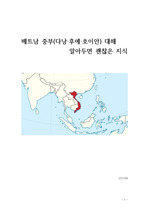Human structure
- 최초 등록일
- 2010.06.17
- 최종 저작일
- 2010.06
- 7페이지/
 한컴오피스
한컴오피스
- 가격 1,500원

목차
1)Tisses
-Epithelial tissues
-Connective tissues
-Specialized connective tissues
-Muscle tissues
-Nervous tissue
2)Organ
-Epidermis
-Dermis
-Hypodermis
3)Organ system
-Integumentary System
-Skeletal System
-Muscular System
-Digestive System
-Circulatory System
-Respiratory System
-Excretory System
-Reproductive System
-Endocrine System
-Nervous System
본문내용
. A tissue consist of one or more cell types and often an extracellular matrix that collectively perform a specific task or tasks.
(1) Epithelial tissues
Epithelial tissue, or epithelium, is a sheetlike tissue with one free surface. The other surface typically attaches to connective tissue.
-Simple squamous epithelium
: Lines blood vesels, the geart, and air sacs of lungs
: Alows substances to cross by diffusion
-Simple cuboidal epithelium
: Lines kidney tubules, ducts ofsome glands, oviducts
: Absorbs, secrete, moves materials
-Simple columnar epithelium
: Line some airways, parts of the gut
: Absorbs, secretes materials
(2) Connective tissues
Connective tissues are the most abundant and widely distributed vertebrate tissues. The various types of soft connective tissues all include the same components but in differint proportions.
-Loose connective tissue
(10) Nervous System
A. Functions
1.regulation and correlation/integration of body activities through conduction within and between individual cells or neurons, which eventually cause a response in some other system (especially muscular contractions). The nervous system is fast acting; conduction may be faster than 90 meters per second.
B. Components
1.Central nervous system (CNS): brain, spinal cord
2.Peripheral nervous system (PNS): craniospinal nerves, which exit from the protective skeletal sheath of the cranium and vertebrae and may be either of a voluntary nature (to striated muscles) or involuntary (to smooth muscles); nerves of the latter type are often referred to collectively as the autonomic nervous system. Sensory nerves from either complex sense organs (e.g., eye, ear) or simple receptors (e.g., cutaneous sensory nerves) enter the CNS via the craniospinal nerves.
참고 자료
없음




